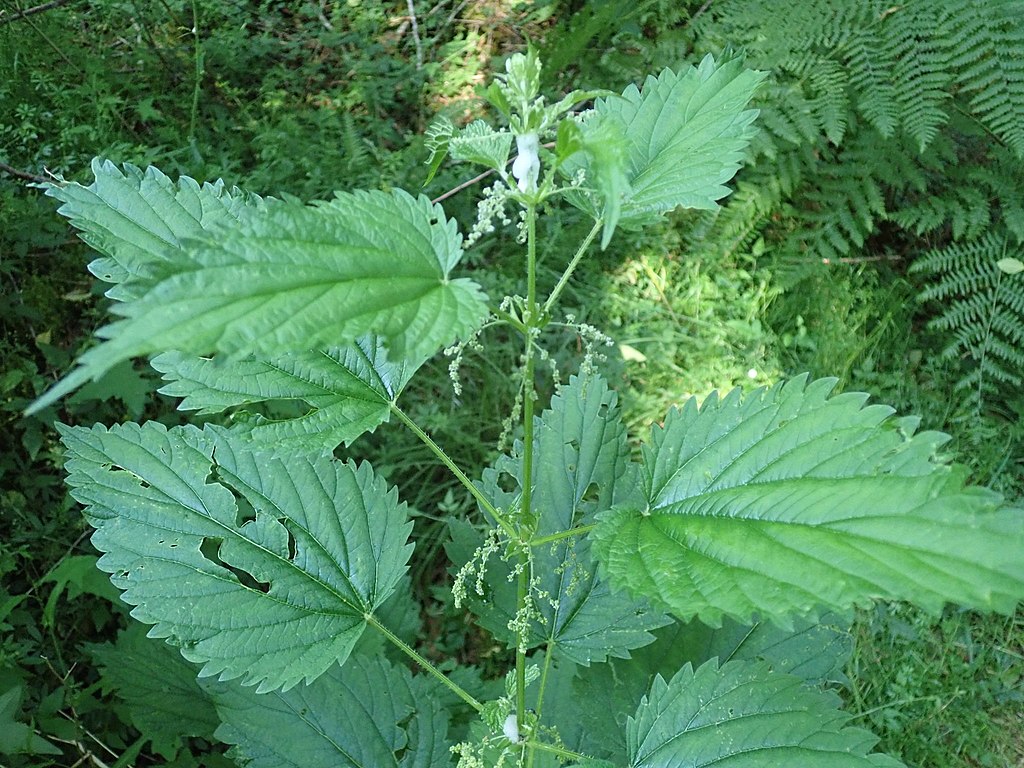Do you suffer chronic symptoms that can’t be pinned down to any specific cause? Gastrointestinal disorders, headaches, hives, congestion, and itchy eyes can all be caused by histamine intolerance. Like gluten intolerance a couple decades ago, this condition is just gaining recognition and becoming a topic of study.
Because it manifests in varied symptoms, many of which overlap with those of other conditions, histamine intolerance is difficult to recognize and diagnose, but experts estimate that at least one in 100 people, mostly middle-aged individuals, have histamine intolerance. Symptoms range from anxiety and elevated heart rate to brain fog, fatigue, itchy or flushed skin, swelling, menstrual pain, watery eyes and wheezing.

What are histamines
Histamines are chemicals produced by our body that serve many functions. While essential to digestion and neuromodulation in the nervous system, histamines are most commonly known for their role in the immune response. In proper dosage, they act to remove potential threats (like allergens) from our body — causing any number of symptoms like those mentioned above. Thus, histamine intolerance can easily be mistaken for an allergy.
Many people use the analogy of a bucket of water when explaining the body’s tolerance of histamines. I think it is more like a motor with motor oil. You need a certain amount to function, but if you use too much, you’ll end up with a smoking tailpipe, high pressure on the oil gauge, and ultimately, motor damage. The trick is to stay between the minimum requirement and the maximum capacity, which varies from person to person.

In addition to those we produce naturally, the foods we eat carry varying amounts of histamine, and certain foods can stimulate the production of histamines. This makes diet a key factor in regaining balance from a histamine intolerance. Sometimes our favorite “health foods” are the biggest culprits in our histamine condition, making it fairly complicated to sort out.
Success
You are now signed up for our newsletter
Success
Check your email to complete sign up
For instance, bacterial fermentation produces histamines. This includes products like sauerkraut, yogurt, miso, and sourdough. All these, along with aged cheeses, alcohol and vinegar, are considered high-histamine foods.
In fact, fresh food in general is stressed in a low-histamine diet — as the natural process of decomposition produces histamines. In particular, meat and fish that have no histamine to begin with, become higher in histamine if they are not fresh, or promptly frozen after slaughter.
Other factors that can elevate histamine levels include environmental factors, stress, heat, medication, the menstrual cycle and a gut imbalance. It is therefore very important to take a holistic approach in addressing histamine intolerance.
Why it is difficult to test

Since histamine levels vary throughout the day and are dependent on so many factors, testing for histamines themselves isn’t very meaningful. In addition, the symptoms overlap with other conditions, which must be ruled out before a diagnosis can be made.
Often, the first move is to get tested for allergies.
Histamine intolerance is also similar to mast cell activation syndrome (MCAS), which can be detected by testing for the serum tryptase. If elevated, it indicates an excess burden of mast cells, and you may have other issues that need to be addressed.
A blood test for serum diamine oxidase (the main enzyme that gets rid of histamines) can determine whether you have low levels of this enzyme — indicating histamine intolerance — but this test is impractical, since it is practically impossible to get.
Why antihistamines don’t work for histamine intolerance

While antihistamines are useful for true allergic reactions, they can heighten the symptoms for those with histamine intolerance. This is because antihistamines both mimic histamines and prevent them from doing their job. Continual use as a prophylactic will cause the body to sense a deficiency and produce more histamines to make up for it.
Similarly, many supplements can have a rebound effect. Before investing in capsules and herbs, become familiar with how they work and whether there are any loopholes in the theory.
Keep in mind that there is often an underlying cause. This is your body’s way of telling you that something in your life is out of balance, and it’s going to keep making you uncomfortable until you figure it out.
Stress, fear, and other factors can all inhibit your body’s ability to manage histamines. These may be complicated situations to rectify, however, and require the investment of time and spiritual work.
For quick relief, what works wonders for most people is modifying the diet.
The elimination diet

No matter how much we are bombarded with eating opportunities, we are ultimately in control of everything we put in our mouths. When we make a habit of eating our favorite foods, or eat to satisfy needs other than hunger and nutrition, our diet can become imbalanced, and problems like histamine intolerance may arise.
To regain balance, one approach is to basically start over — take out all the possible offenders and gradually re-introduce them after you feel better. This is called the elimination diet.
Warning: If you begin by looking at all the foods that are either high in histamine or are histamine triggers, you will just become discouraged or develop a fear of food. Look, instead, for low histamine foods, and tally them up. This will bolster your confidence and help you withstand the blow when you discover all your favorite foods on the “high histamine” list.
That said, there are many lists that can help you gauge which foods are low histamine, and which are high. Since these lists were made by different people, based on their own experience, you might find they are not 100 percent accurate for you.
An elimination diet focuses on eating only low or no-histamine foods for a period of time to see if your symptoms clear up. Take time to study the subject before ditching things from your diet. Formulate a plan that makes sense for you, and prepare a shopping list for low/no-histamine foods.
Remember, for each source of nutrients that is given up, you must have a suitable replacement. Be sure to find a low-histamine protein, fruit/vegetable and starch/grain for each meal to ensure that you continue to provide proper nutrition for your body.
To give you the basic idea, a low-histamine diet would include: whole-grain products rather than those made with bleached or enriched flour; rice and coconut milk rather than dairy; fresh vegetables rather than fermented produce; fresh fruit, with limited citrus and tomato; fresh meat rather than processed; soaked and cooked dry beans rather than canned; and herbal teas rather than caffeinated beverages.
Usually within a week, you will notice a big difference. It is recommended to record everything you consume (and the symptoms present) for troubleshooting and uncovering specific triggers. In some cases you will notice an increase in symptoms — this could mean that some of your chosen foods are actually increasing your histamine levels, or that you have additional sensitivities.
Other factors

- Seasonal allergens like pollen can tax your immune system and raise your histamine levels.
- Mold toxicity – Certain types of mold can release mycotoxins that will trigger your immune system to release histamines.
- Hormone levels also affect histamine release, and symptoms may be worse during menstruation or menopause.
- Low diamine oxidase (DAO) – This digestive enzyme is responsible for breaking down excess histamine. It can be replenished naturally with foods containing omega-3 fatty acids, healthy saturated fats, vitamin B12, and minerals like calcium, phosphorus, iron and zinc.
- Stress and anxiety – Your mental state can play a large role in your physical health, so it is important to look beyond physical factors.
Restoring balance in your life

While calming the symptoms with diet, we should also look for the root of the problem and nurture mental health. Stress, fear and anxiety can all raise your histamine levels. Allow yourself the time to do things you enjoy. Are you due for a vacation? Sometimes a change of scenery will help you see things more clearly.
If you already recognize the problem but don’t know how to deal with it, it may be time to focus on personal growth. There are several strategies that are very useful in restoring spiritual balance and helping us become more at ease with ourselves.
- Mindfulness – Give your full attention to whatever it is you are doing. Being present and living in the moment allows you to appreciate more, and worry less. Meditation is a great way to improve mindfulness.
- Simplicity – Extract yourself from unnecessary complications, possessions and thoughts – and experience the joy of mental freedom.
- Positive thinking – Replace critical, limiting, negative thoughts with positive, hopeful, and encouraging thoughts. By improving your motivation and self-esteem, you can change your life.
- Let Go of the Reins – Trust in our Creator’s Divine arrangement and release the need to control everything. Anger, fear and resentment will all dissolve when you see how meaningless they are.
- Welcome change – According to Greek philosopher Heraclitus, “Change is the only constant in life.” Let go of your resistance to change, and find out how flexible and resilient you really are.
- Cultivate virtue – Focus more on being the best you possible, and less on struggling for the things you want. Open your heart to loving kindness and forgiveness and watch the stress and anxiety fade away.













